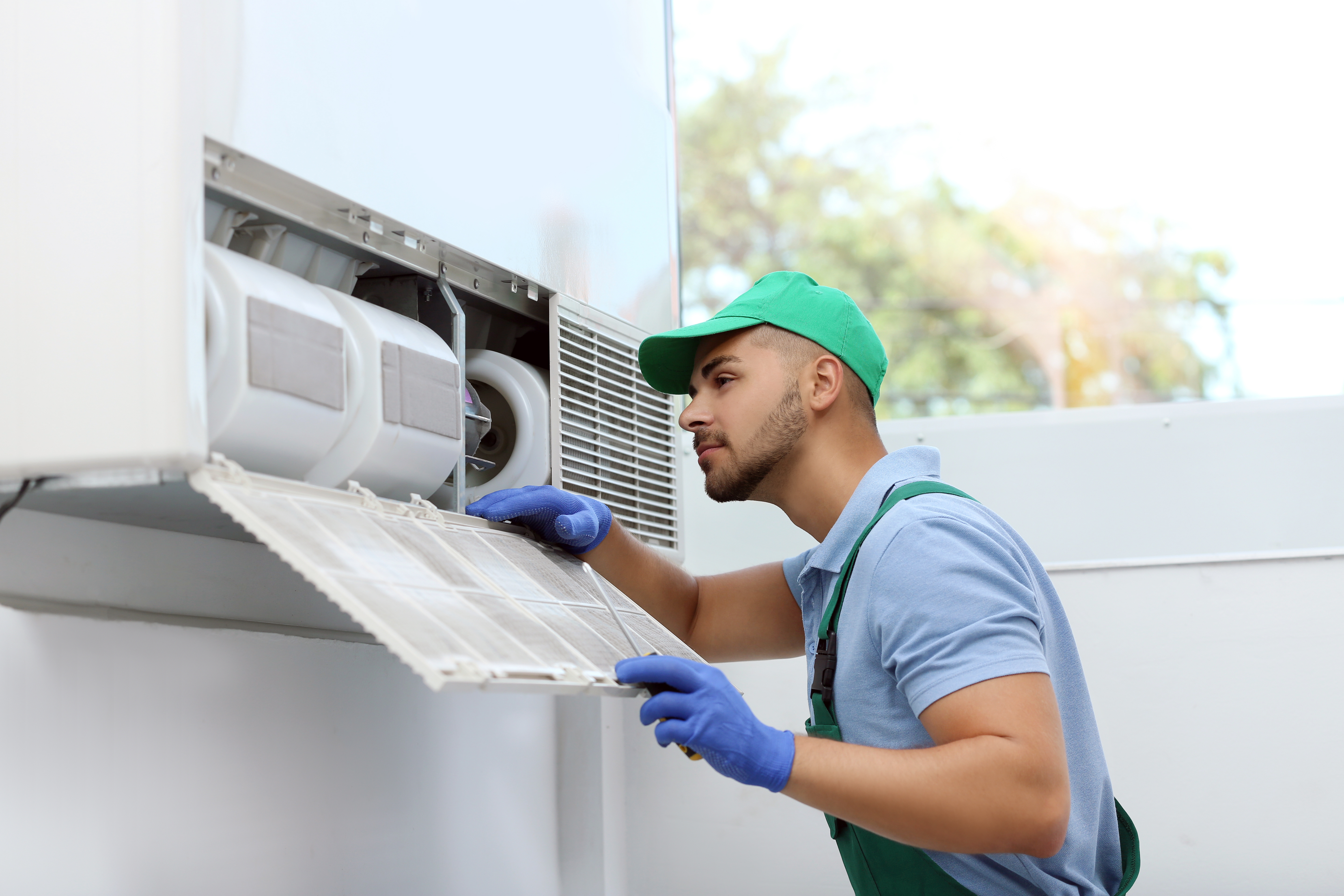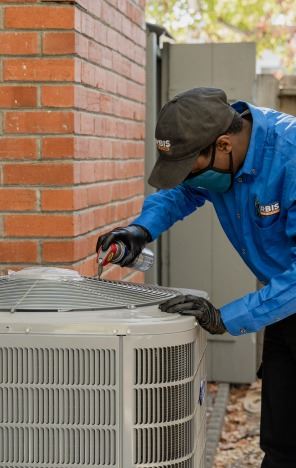How a Heatpump and Heating System Job Together to Optimize Your Home's Heating Efficiency
Comprehending exactly how a heat pump and furnace work with each other is necessary for home owners looking for reliable heating solutions. Each system has its staminas, offering a balanced approach to home comfort. The heatpump masters moderate temperature levels, while the heating system provides fast warmth during extreme cold. This harmony not just lowers energy prices but additionally improves the life-span of both devices. What aspects influence this collaboration, and just how can homeowners optimize their advantages?
Comprehending Warm Pumps: How They Function
Although many individuals may be strange with their internal operations, warmth pumps play a crucial function in modern heater. These gadgets run by moving warmth from one location to one more, making use of the concepts of thermodynamics. In cooler months, a warmth pump extracts warmth from the outdoors air, ground, or water, and transfers it inside your home to heat the home. On the other hand, throughout warmer months, it can reverse the procedure, functioning as an a/c unit by removing warm from inside to the outside.Heat pumps contain an evaporator, compressor, condenser, and expansion shutoff. The refrigerant within the system takes in heat as it vaporizes at reduced temperatures and stress. The compressor then increases the stress and temperature level of the refrigerant, enabling it to launch heat as it condenses. This effective procedure can significantly reduce energy consumption contrasted to typical home heating approaches, making heat pumps a sustainable selection for environment control in homes.
The Role of Furnaces in Home Home Heating
Heaters play a vital function in home heating by offering a reliable source of warmth throughout the colder months. They run by creating warm via combustion or electric resistance, distributing it throughout the home by means of air ducts or glowing systems. The efficiency of a heating system is commonly measured by its Yearly Gas Use Effectiveness (AFUE) score, which suggests just how effectively the system converts gas right into heat.Furnaces can use different power sources, consisting of all-natural gas, oil, propane, or power, allowing homeowners to choose the most ideal choice for their demands. Unlike warmth pumps, which might battle in extreme cool, heaters keep constant efficiency, making sure that interior temperatures stay comfortable no matter exterior conditions. Furthermore, modern heaters commonly come equipped with sophisticated innovation, such as variable-speed blowers and smart thermostats, boosting their performance and responsiveness. This adaptability makes heating systems an important part in comprehensive home heating approaches.

Benefits of Using Both Systems With Each Other
Combining the staminas of both furnaces and heatpump can cause a much more effective and reliable home heating solution. Utilizing both systems enables home owners to benefit from the heatpump's energy performance during milder temperature levels while counting on the heater for even more severe cold problems. This dual technique can substantially minimize energy costs, as warmth pumps consume much less power than typical home heating techniques when temperature levels are moderate.Additionally, using both systems with each other can improve comfort levels in the home. Warmth pumps can offer constant, even heating, while heaters can quickly increase ambient temperatures when needed. The assimilation of both systems can prolong the lifespan of tools by lowering wear and tear on each device, as they share the work. Inevitably, home owners can appreciate a well balanced, economical heating service that readjusts seamlessly to varying climate condition, guaranteeing a warm and welcoming home throughout the cold weather.
Exactly How Warm Pumps and Furnaces Complement Each Other
When homeowners integrate heatpump and heating systems, they develop a corresponding heater that takes full advantage of performance and comfort. Heatpump operate by moving warm from the outdoors air or ground, making them extremely effective in modest climates. They excel during milder temperature levels, giving economical home heating. On the other hand, heating systems generate warm through burning or electrical resistance, providing solid, instant warmth throughout severe cool conditions.The combination of these 2 systems enables vibrant changes based on temperature changes. During warmer months or milder winter season days, the heatpump can take the lead, conserving power and lowering prices. As temperature levels drop, the heater can flawlessly involve, guaranteeing constant warmth throughout the home. This synergy not just maximizes energy use but also improves the life expectancy of both systems, as each unit runs within its excellent efficiency array. Together, they create a well balanced setting that adjusts to varying environment needs.
Optimizing Performance: Tips for Homeowners
Homeowners can boost their home heating effectiveness via a number of practical techniques. Developing a routine maintenance routine, integrating smart thermostat modern technology, and carrying out effective insulation and securing options are essential click reference actions. These steps not only improve comfort yet also decrease power expenses.
Normal Maintenance Set Up
To assure maximum home heating efficiency, developing a normal upkeep timetable is necessary for any home. Home owners must prioritize regular evaluations of both heatpump and heating systems to ascertain peak performance. This consists of changing air filters each to 3 months, as blocked filters can substantially reduce performance. Additionally, organizing specialist upkeep a minimum of yearly allows professionals to identify and resolve prospective concerns prior to they escalate. Home owners ought to likewise clean up the heatpump's exterior system to avoid debris accumulation that can hinder air movement. By adhering to a regular upkeep routine, homeowners not only improve their heater' effectiveness yet additionally expand their lifespan, causing greater comfort and decreased energy costs throughout the chillier months.
Smart Thermostat Assimilation
Incorporating a wise thermostat right into a home heating system can greatly enhance power effectiveness, particularly as it enables specific control over temperature level setups. These gadgets can learn the property owner's schedule and choices, immediately changing the temperature level to optimize convenience while lessening energy usage. They can reduce home heating during times when the home is empty, decreasing unnecessary usage. Many clever thermostats likewise provide real-time energy usage information, making it possible for homeowners to make enlightened decisions regarding their heating behaviors. Furthermore, remote gain access to via smart device applications permits customers to change setups from anywhere, guaranteeing the home is cozy upon return. Overall, clever thermostat assimilation not just boosts comfort yet substantially contributes to power cost savings and efficiency.
Insulation and Sealing Solutions
Smart thermostats play a vital role in energy performance, but their effectiveness can be greatly enhanced by correct insulation and sealing services. Homeowners need to prioritize shielding wall surfaces, attics, and floorings to reduce heat loss. High-grade insulation materials, such as spray foam or fiberglass, can greatly boost thermal resistance. In addition, securing gaps around ducts, windows, and doors avoids cold air seepage and heat retreat. Weatherstripping and caulking work methods for addressing these leakages - heat pump replacement ooltewah tn. Routine examinations for air leaks, together with the usage of blower door examinations, can help determine problem locations. By purchasing insulation and securing, property owners can maximize the performance of their furnace, inevitably causing decreased energy check over here usage and reduced utility bills
Common Myths Concerning Heat Pumps and Furnaces
What mistaken beliefs surround warmth pumps and heating systems? Several people erroneously think that heat pumps are inefficient in chillier climates. Actually, contemporary warm pumps are designed to run efficiently also in reduced temperature levels, providing dependable heating throughout wintertime. An additional usual misconception is that furnaces are always more reliable than heat pumps. However, this relies on the certain power resources and performance scores of the units in concern. Some may also believe that using both systems concurrently is unneeded, but in reality, this combination can enhance heating efficiency, especially throughout extreme climate condition. Additionally, people typically presume that warmth pumps require consistent maintenance, when truthfully, they have comparable upkeep needs to traditional furnace. By unmasking these misconceptions, property owners can make even more educated choices concerning their home heating options, inevitably resulting in boosted convenience and power efficiency in their homes.
Upkeep Factors To Consider for Combined Systems

Regularly Asked Inquiries
Can Warm Pumps Work Successfully in Exceptionally Cold Climates?
Heatpump can struggle in incredibly cool climates as a result of decreased effectiveness and heat extraction constraints. Improvements in technology have actually led to versions made for much better performance in such problems, improving their practicality in harsh settings.
The Length Of Time Do Warmth Pumps and Furnaces Normally Last?
Heat pumps commonly last 15 to twenty years, while furnaces have a lifespan of 15 to three decades. Regular upkeep can prolong their long life, making sure reliable procedure and minimizing the demand for premature substitutes.

What Is the Ordinary Price of Setting Up Both Systems?
The ordinary price of setting up both a heatpump and a heating system usually ranges in between $5,000 to $10,000 - ductless mini splits. Elements influencing this expense include system size, installment complexity, and regional labor rates
Exist Tax Obligation Incentives for Using Energy-Efficient Heating Equipments?
Numerous house owners ask concerning tax rewards for energy-efficient heater. Numerous government and state programs typically use refunds or credit histories, motivating the fostering of lasting technologies to decrease energy intake and promote environmental obligation.
Exactly how Do I Select the Right Size Heatpump and Heating System?
Selecting the right size heatpump and heater entails calculating the home's square video, taking into consideration insulation quality, and examining neighborhood climate. Consulting an expert navigate to this site can ensure excellent system performance and power performance based upon specific needs. ductless mini splits. Comprehending exactly how a heat pump and heater job with each other is important for home owners seeking reliable home heating options. In chillier months, a warmth pump extracts heat from the outdoors air, ground, or water, and transfers it inside your home to warm up the living area. When house owners integrate warmth pumps and heating systems, they develop a corresponding heating system that maximizes performance and convenience. Warm pumps operate by moving heat from the outdoors air or ground, making them extremely efficient in modest climates. Heat pumps can struggle in exceptionally chilly environments due to minimized effectiveness and warm removal restrictions